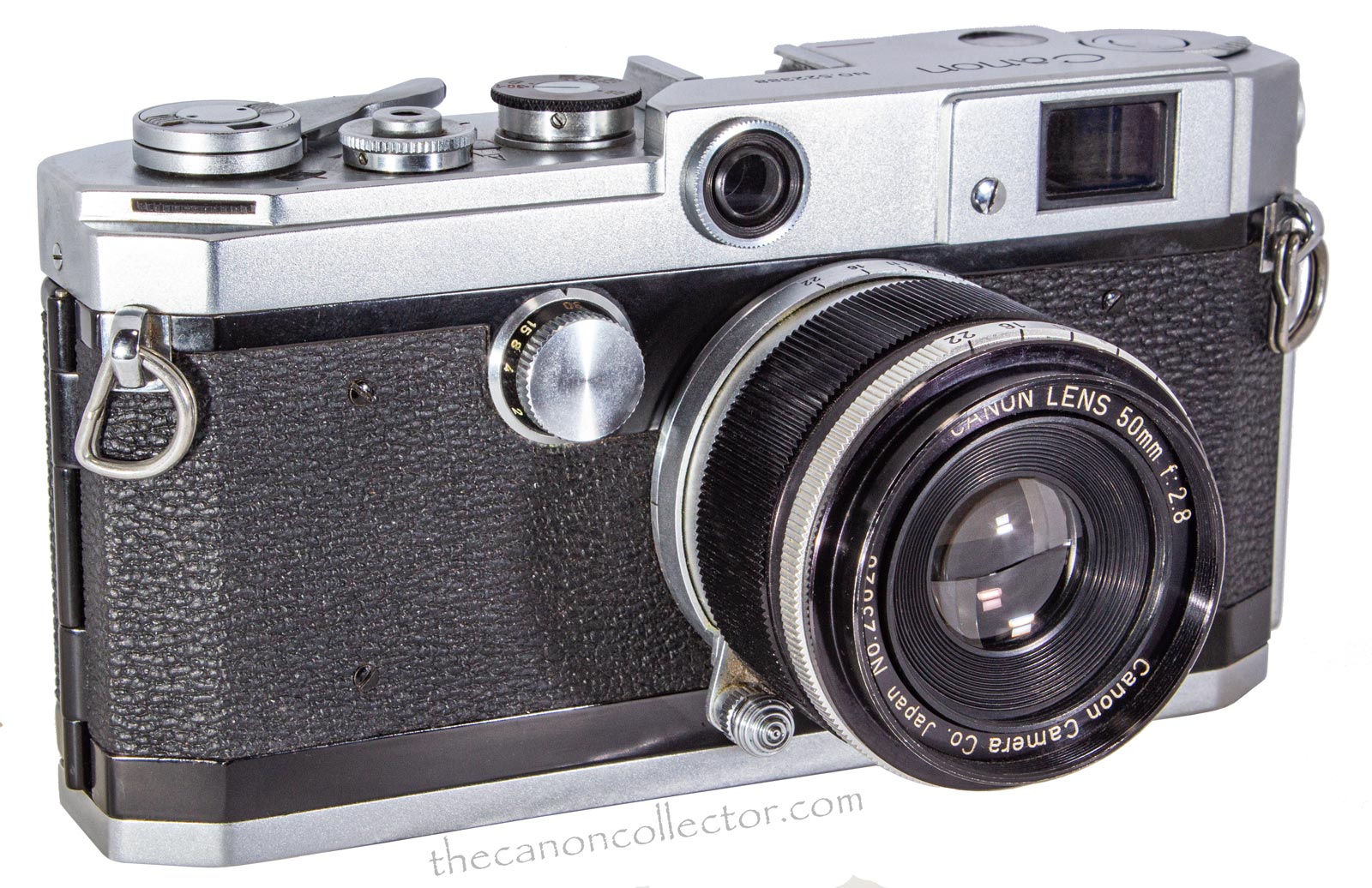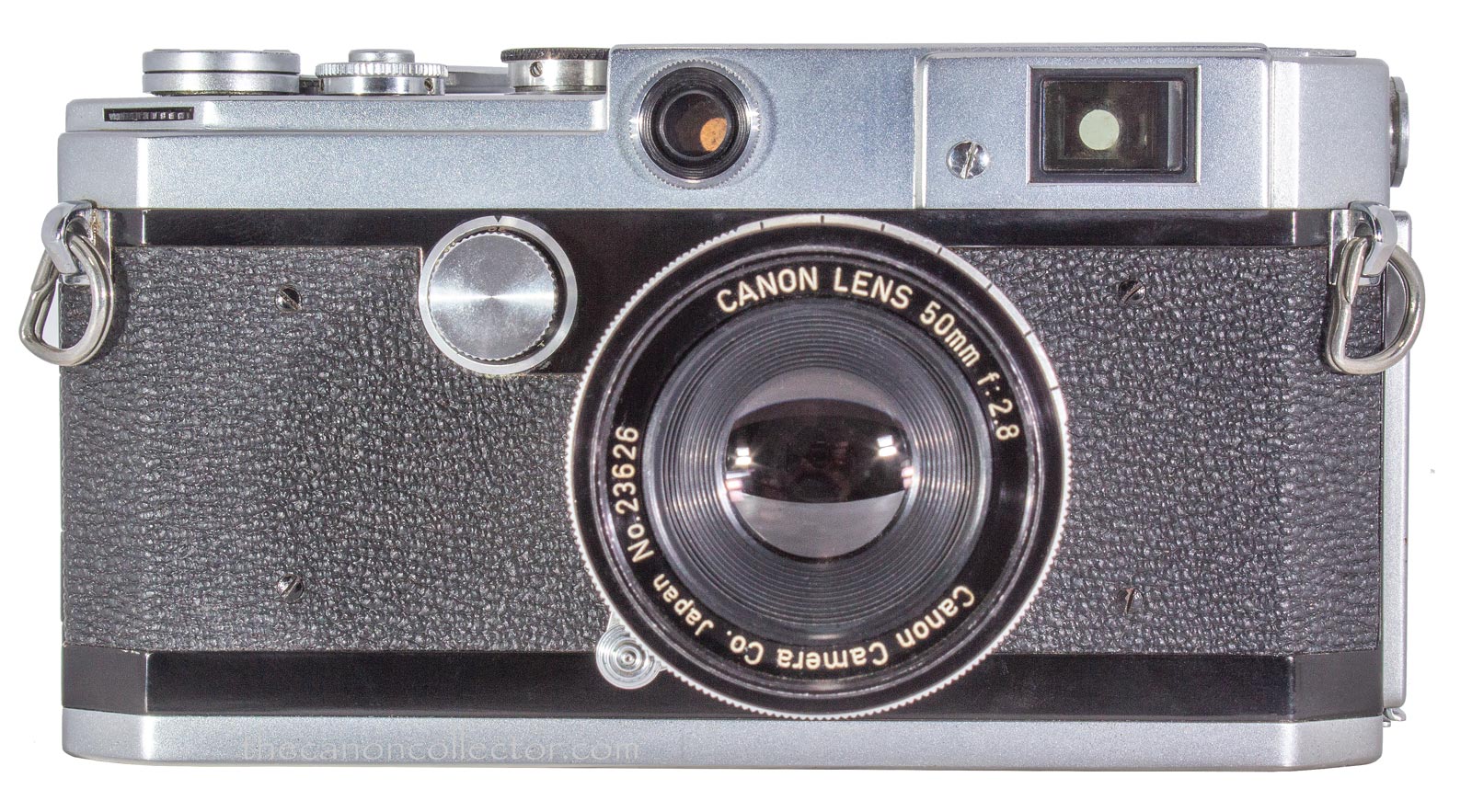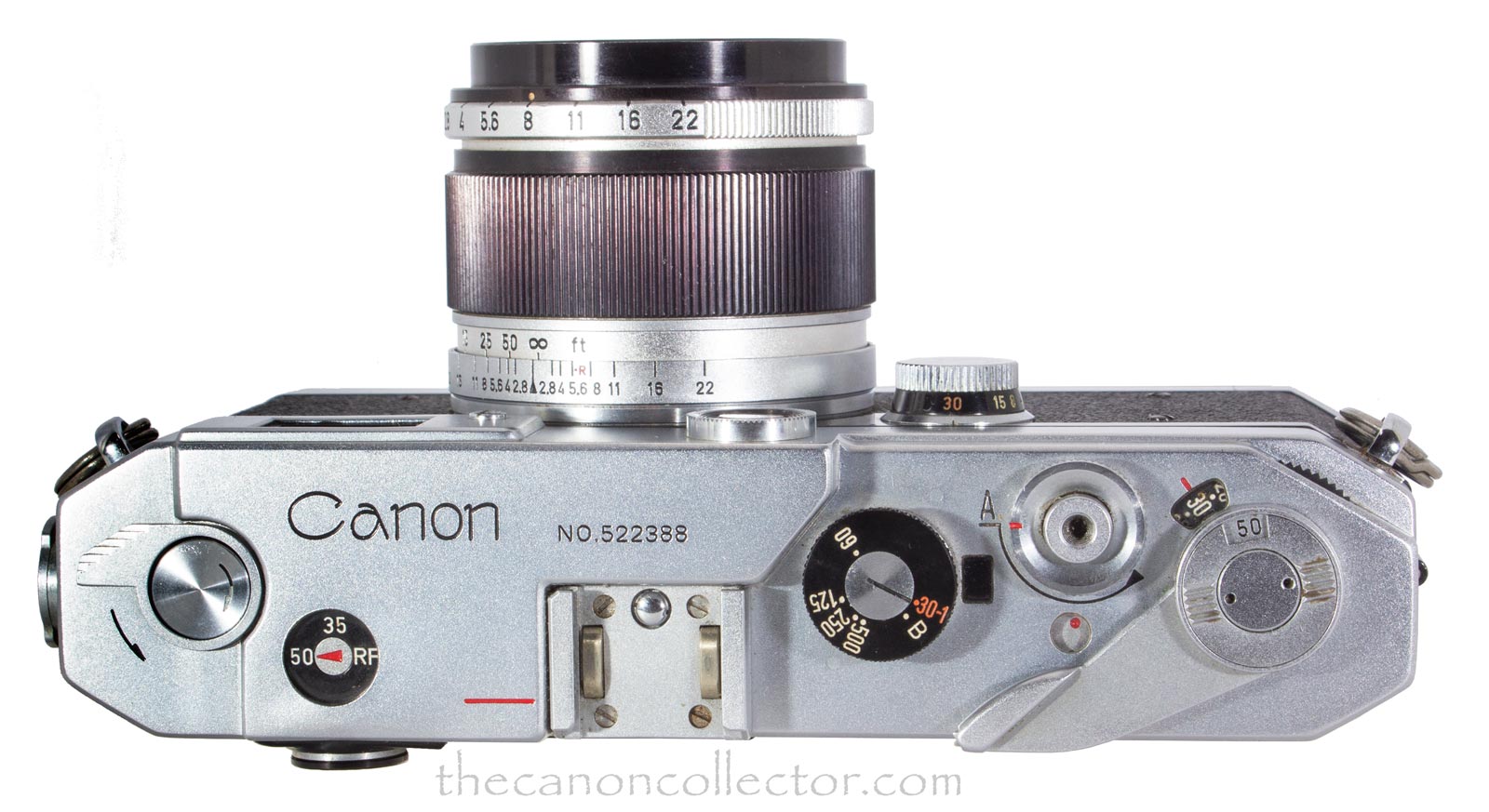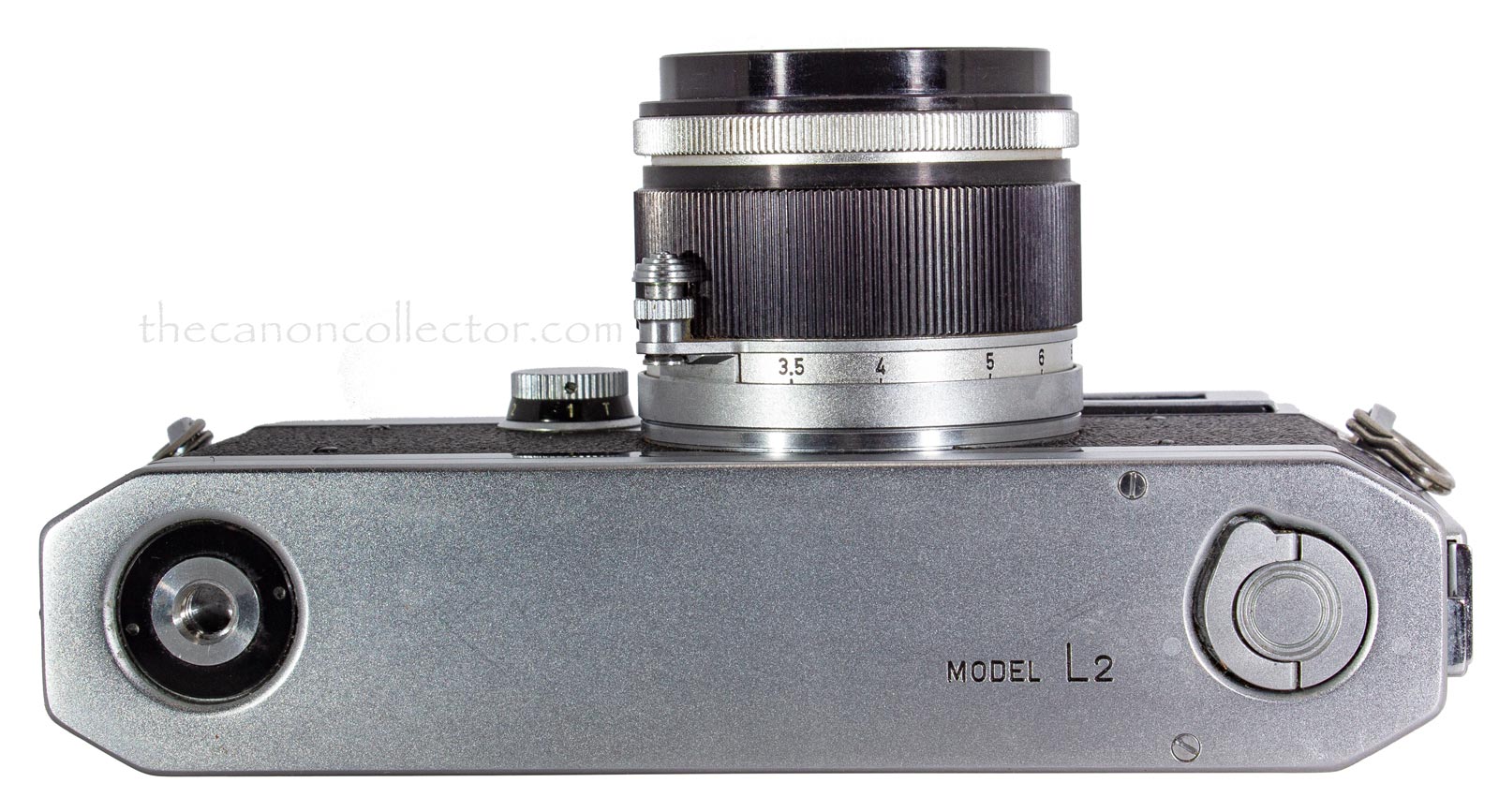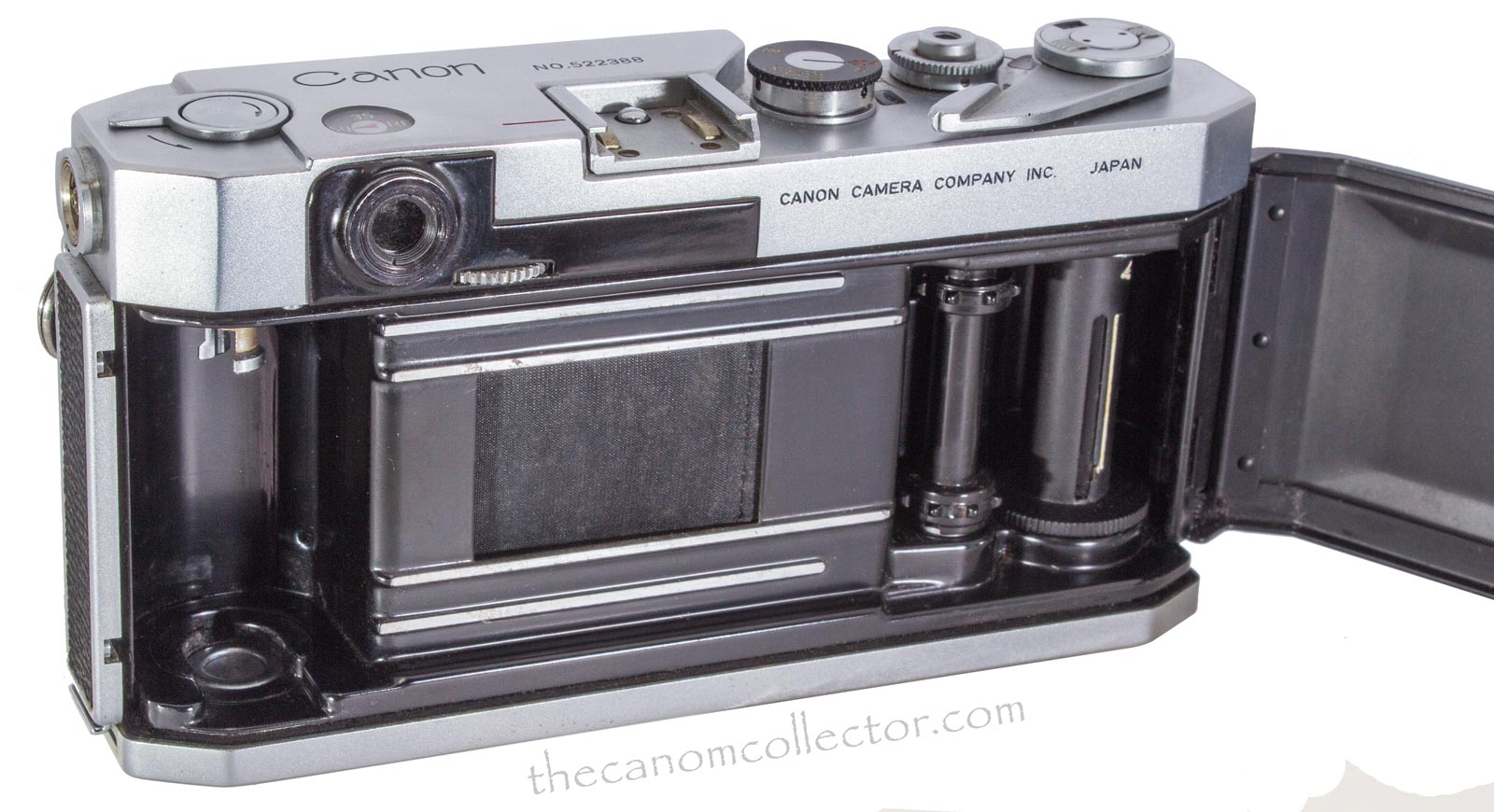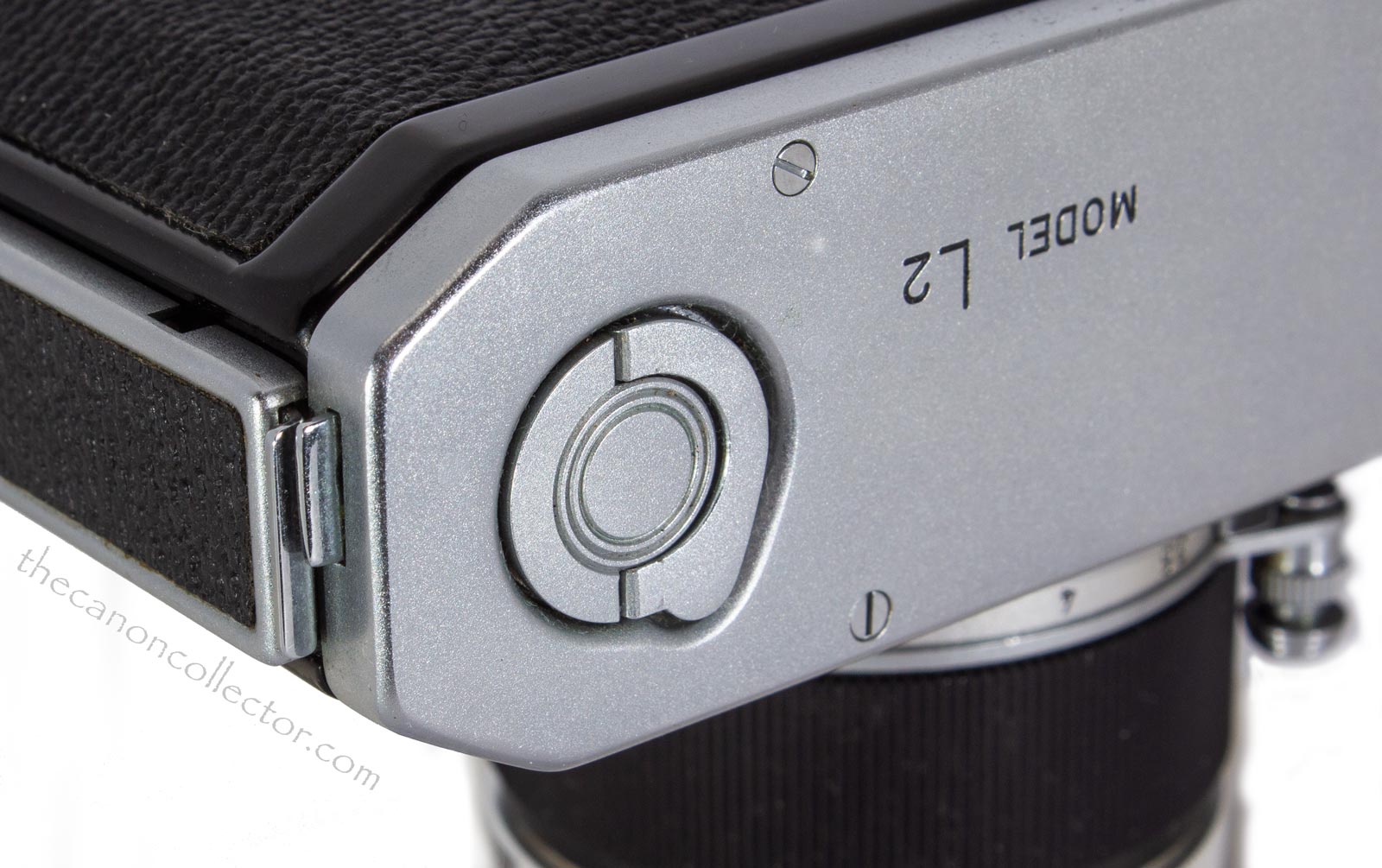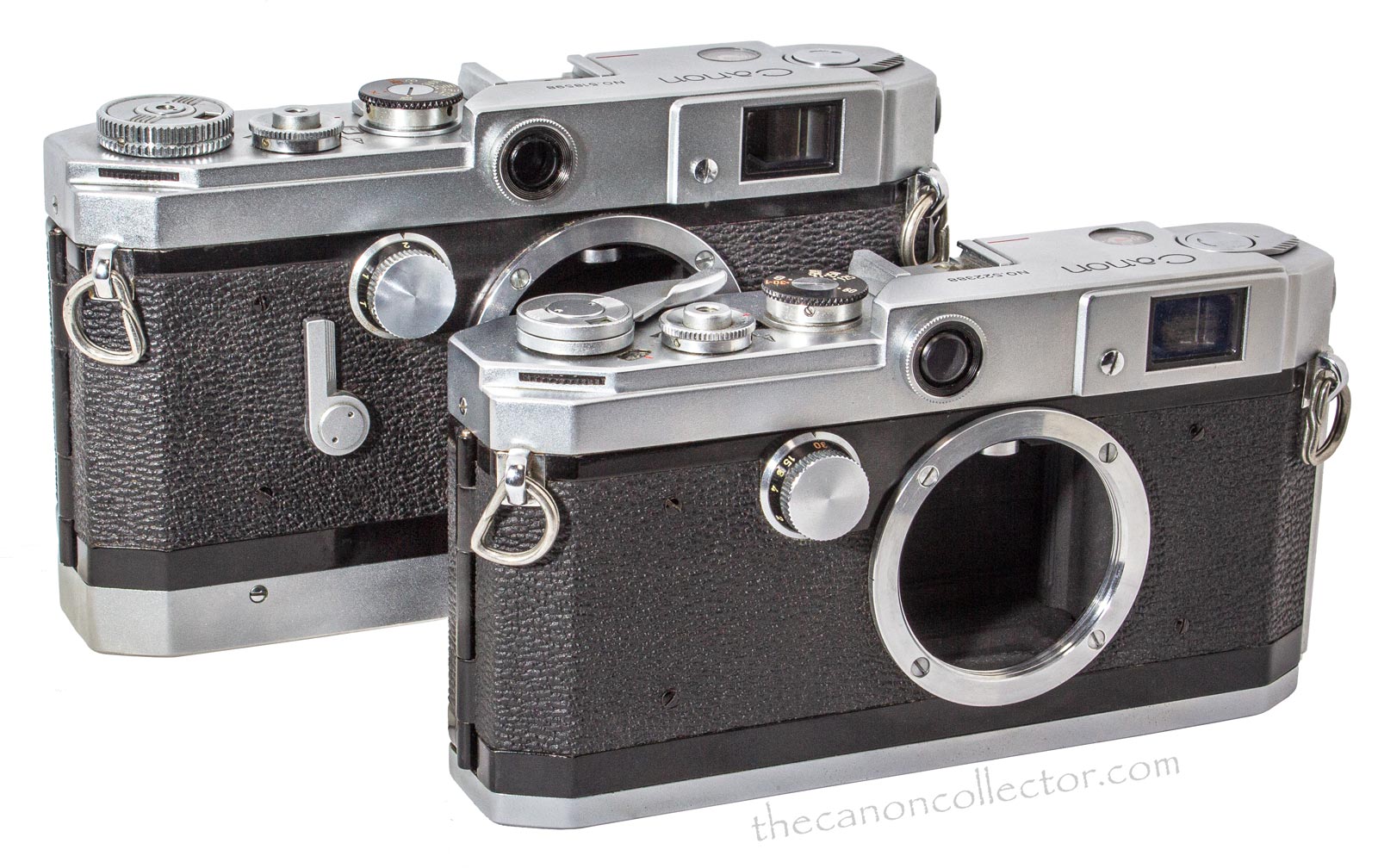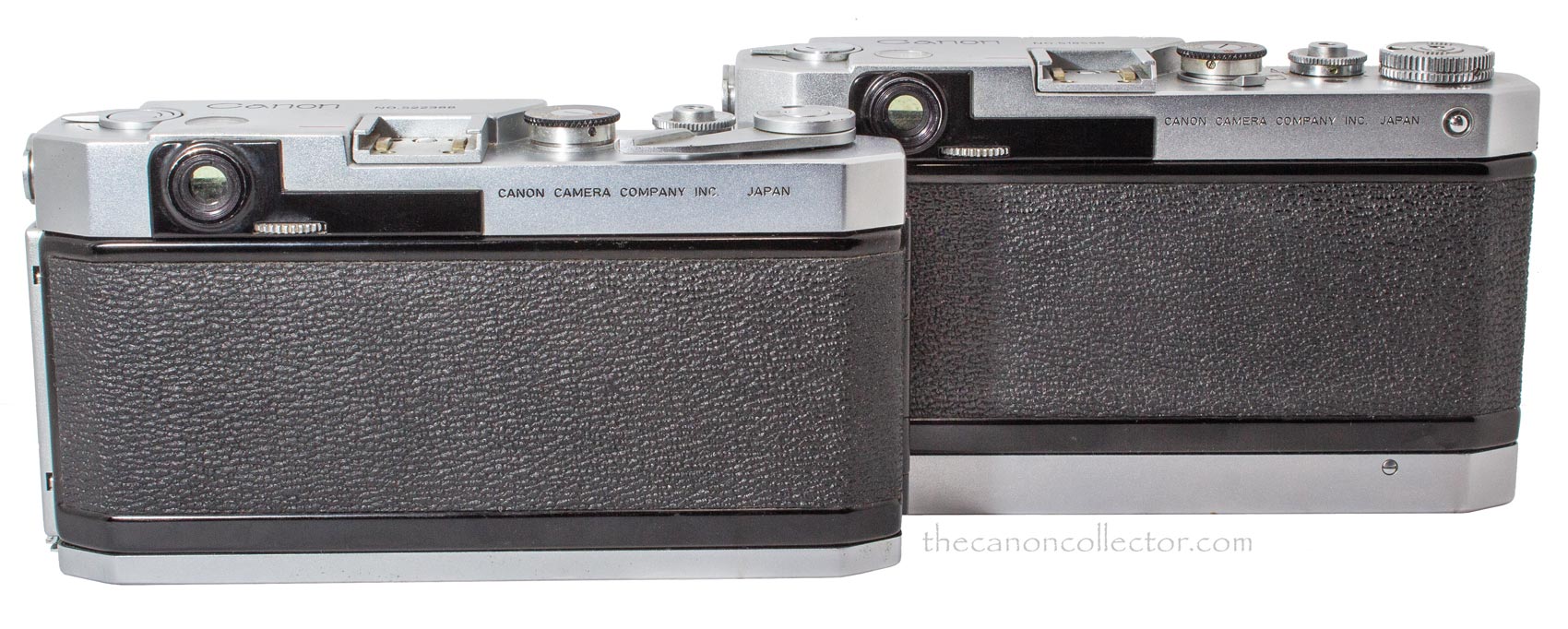The Canon L2
When Leitz brought out the Leica M3 in 1954 it spelled the end of the Barnack styled camera
body, and it caught the Japanese camera industry
off guard. Canon saw where the future was going
and immediately begn work on a similar type of camera which culminated in the introduction of
the Canon Vt in August of 1956.
Canon had been promoting a Rapid Winder base for their later Barnack cameras and when the Vt was developed they incorporated that system into it. The Vt film advance was by a folding trigger arrangement
in the base of the camera. However, Canon began hearing reports of customer resistance to the trigger wind system. In a response to this the company began work on a less expensive camera model with a thumb lever film advance like the Leica M3. That camera, introduced in March of 1957, was the Canon L2 camera.
One cost cutting mesure taken on the L2 Camera was the elimination of the self timer. It is absent from its usual place on the front of the camera.
The Canon L2 camera was Canon’s first camera with a film advance lever. As we now know, this was to become the industry standard for all 35mm cameras. In almost all other respects the L2 is a slightly simplified Vt camera. Production ran from about late 1956 to late 1957 and in that period Dechert says that 7,350 were made.
The viewfinder is the same as found on the Vt. It is an improvement on the Barnack viewfinders. The image is rectangular, of course, with the edges somewhat out of focus. There are no frame lines and the image is not parallax corrected. However, the L2 retains the parallax correction pin introduced on the Vt.
The traditional 3 position viewfinder is retained. Using the serrated thumb wheel next to the eyepiece the view can to set to a 35mm lens equivalent, a 50mm equivalent, and a magnified view giving a 150% magnification of the circular double image for more accurate focusing. This positions are indicated on the dial above the eyepiece on the top deck as “35”, “50”, and “RF”.
The layout of the L2 camera became the standard for the later rangefinder and manual SLR’s of the bext three decadesfor the camera industry generally.
Unlike the Vt camera the L2 has a locking key in the base that must be turned to open the camera. This key also opened the Canon Film Cassettes made by Canon.
We have a Newsletter
There is a Newsletter for thecanoncollector.com to keep you up to date on what we are posting. Try it!
The L2’s shutter has horizontally travelling fabric curtains. Speeds are divided between two dials, the slow speed dial on the front of the camera and the higher speeds on the dial on the top deck. The lowest speed on the upper dial is 1/30th of a second. The fastest shutter speed is 1/500th of a second. This is down from the 1/1000th on the Vt.
Another economy on the L2 camera is the lack of self timer. This is evidenced by the lack of a timer lever on the front of the camera.
The camera is syncronized for for FP flash bulbs only which allows shutter speeds from 1/60th to 1/500th of a second. There is no X sync for strobe lights. As a result, the tab under the top speed dial to set the type of flash sync is omitted and the window to the right of the speed dial is blacked out.
The traditional
layout of the inside of the camera
is exactly like the Vt Camera and sets the style for Canon cameras for
the next 30 years and more. Even EOS film cameras in the 2000’s were laid out like this!
Comparison with the Vt Camera
The Canon L2 camera looks very like the Vt camea. The actual top deck appears to be identical in shape. The Vt has an extra hole on the back right hand side for the small button to release the top deck film advance knob. and a hole on the top deck just above it to display the film speed. Otherwise they actually look interchangeable.
The bottom plate is different. It is deeper on the Vt to accomodate the bottom trigger mechanism. It also has the slot for the actual trigger. The Vt has no locking key like the L2 has. The back is released by pulling a small tab at the bottom of the left end of the camera. On the L2 there is a key lock in the bottom plate as well that must be turned before the bottom tab is pulled to open the back.
The Vt behind and L2 in front appear almost identical except for the missing self timer lever and thumb lever film advance. Notice the deeper base plate due to the bottom trigger film advance mechanism on the Vt camera.
The top decks of the Canon L2 camera (on top) and the Vt camera (on the bottom) are almost interchangeable. From the film advance lever and to the left they are identical. The L2 even kept the flash sync window although it is blacked out.
The backs of the Vt (furthest away) and the L2 (closest) appear identical except for the depth of the bottom plate and the small button on the right end of the top deck on the Vt which released the film advance knob on the top of the camera so that film can be advanced easily when the camera is on a tripod.
Using the Canon L2 Camera
So what is the Canon L2 camera like to use. Well, I am holding my L2 as I write this post. And it feels like the M3 I had back in the 1960’s. It has a lower top speed, but, it is easier to load. I takes the same lenses, same film, and it has a more versaltile viewfinder. The image in the viewfinder is not as good as I recall on the M3. But the camera has the same dense heavy feel of precision as its mentor. And it is equally pretty to look at.
But to be honest, considering the camera is half the cost of the Leitz camera I can forego the 1/1000th of a second and the poorer image in the viewfinder. If I were into sports photography the top shutter speed might be more important, but, I am not. The viewfinder is adequate and the versatility of the RF setting for precise focus is a definite plus. I really like this camera.
The shutter button is very much to my liking. It is a single stage release and it is very positive. There is no slack or play in the button. You simple press gently and it releases cleanly. And there is a shutter button lock by turning the collar under the button.
The winding action on the lever is multi stroke, or single, as you please, and it is easy. There is a positive indication when the film is moving correctly and you should always watch for them. First is the small window just behind the shutter button. The little red dot there rotates if the film is feeding correctly. Also, if you rewind the film gently until you feel some resistance (not too much) then as the film is pulled from the cannister you can see the arrow on the rewind knob rotate. These are the checks that your film is feeding correctly.
I have yet to take this camera out to shoot. As it sits on my desk here it is loaded and ready to go. But it is winter here in Vancouver and the days are dreary. So my outing will have to wait a bit. But once I have taken a roll of new masterpieces of photographic art I shall update this post.
This website is the work of R. Flynn Marr who is solely responsible for its contents which are subject to his claim of copyright. User Manuals, Brochures and Advertising Materials of Canon and other manufacturers available on this site are subject to the copyright claims and are the property of Canon and other manufacturers and they are offered here for personal use only.

